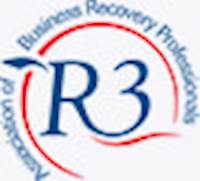
A company voluntary arrangement (CVA) is a tool for business rescue like no other insolvency procedure which can give a viable business the chance of recovery.
A CVA is a formal procedure and is a legally binding agreement between the business and its creditors. It sets out how repayments of company debt should be made to creditors and can deliver a better outcome than an administration or liquidation.
Potential CVA benefits
Some of the key benefits of a CVA are:
- all or a percentage of a company debts can be paid back, depending on affordability, making it beneficial to the business and creditors
- a CVA can allow the core business to trade on under the control of its directors allowing the company to continue to generate income to repay some of its debts
- a CVA can provide the time needed for a business to reorganise and restructure itself
- a ‘statutory moratorium period’ can be used to provide a breathing space from creditor action (such as a winding up petition) while an initial CVA proposal is prepared
- a CVA can be less costly than other insolvency procedures but this does relate to how complex the situation is
- secured creditors generally remain outside of the CVA and therefore are likely to be supportive
- a CVA may enable a company to avoid the negativity of other insolvency procedures (a CVA is not normally advertised but it is registered at Companies House and employees must be informed)
The CVA proposal and CVA process
With the help of an insolvency practitioner, directors will put together a feasible CVA proposal to be put to creditors. Key to the CVA’s approval by creditors is why it’s desirable, details of the CVA contributions and the business’ plans moving forward.
Directors might say with regards to business plans that:
- there are improved credit control procedures
- deposits will be taken up front to reduce risk and loss
- there are new contracts in the pipeline
- fresh marketing initiatives are underway
- assets will be leased, rather than purchased
- stronger management will be in place
A realistic CVA contribution will made in one of the following ways:
- fixed CVA contributions - a fixed monthly amount over a period, calculated from cash flow projections
- seasonal or trend based CVA contributions - variable amounts are paid defined by projected peaks and troughs of the business calendar
- the realisation of company assets or introduction of third party funds into the arrangement
Once a CVA proposal is complete, the insolvency practitioner (acting as a nominee) will send it to the creditors for consideration. After 14 days creditors are asked to vote and at least 75% must agree.
On approval, a nominee becomes the supervisor of the CVA. Their role is to collect contributions, and make distributions to the creditors, report annually to creditors and manage any changes or breaches of the CVA.
A CVA should provide for a better outcome to unsecured creditors when compared to a liquidation. If it is rejected, it may lead to another insolvency procedure such as administration or liquidation.
To determine a company’s current financial position and its suitability for a CVA, a profit and loss statement can be a helpful start. It summarises revenues, costs and expenses for a period.
Directors should think carefully though when considering trading through financial difficulty. At times of insolvency it is a director's legal duty to put creditors’ interests before those of the company. Early and in-depth discussions with an experienced insolvency professional are advisable to keep business recovery options open.
 6 Reasons to choose us for your CVA
6 Reasons to choose us for your CVA
Authored by Greenfield Recovery Ltd | Licensed Insolvency Practice | Competitive | National.
First published Jan 2018 by Companies House.



